Big Horse, Steel Sail, Floating Bathtub: Franconia Sculpture Park Sails On
Glenn Gordon makes a summer journey to Franconia Sculpture Park to see everything from the sublime to the ridiculous. And he means that in a good way.
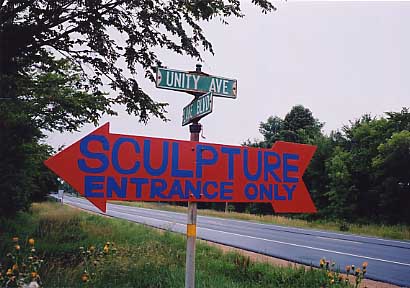
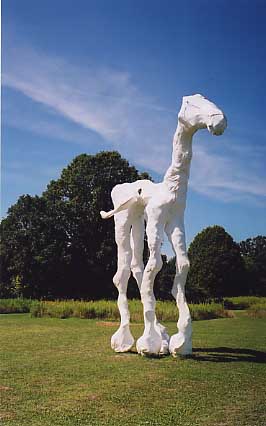
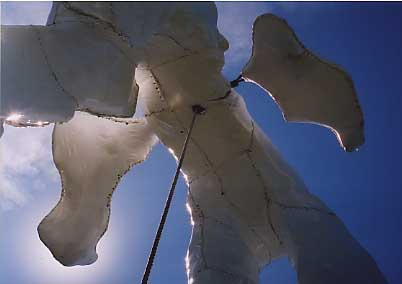
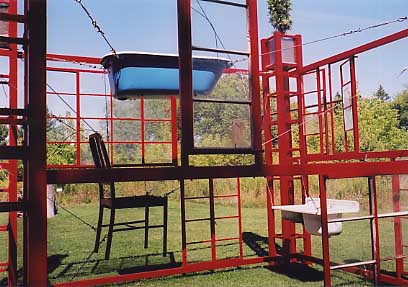
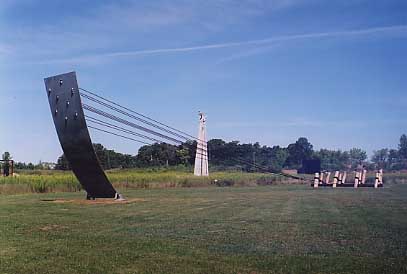
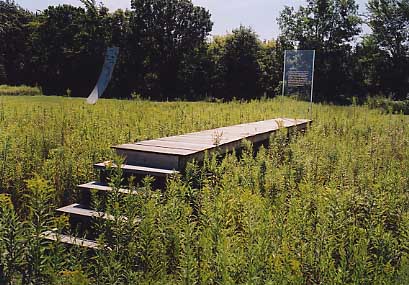
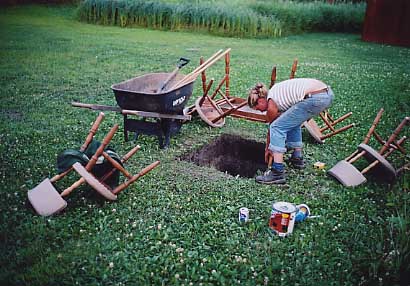
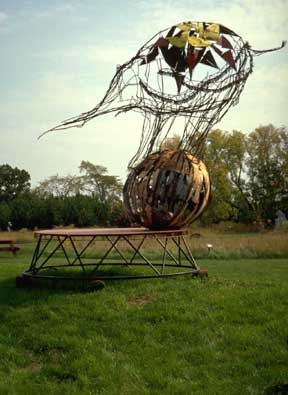
Whenever I went to the old Walker Art Center, it felt like visiting art that had been hospitalized. It always made me feel I should put on scrubs. The Walker’s formal garden across the street has some great sculpture, but it has the same effect. It all stands there like a collection of filled prescriptions. The Walker’s garden is designed to induce cultural awe, but what I seek in sculpture is pleasure–not spoonfuls of cultural cod-liver oil, but pleasure, of both a light and a serious kind–and for that, I like to go up two or three times a year to the rougher-hewn but more humanly accessible Franconia Sculpture Park, about 45 minutes north of the Twin Cities.
Franconia is open from dawn till dusk no matter what the weather every day of the year. Every time you make the trip it’s a different place. New sculpture has sprung up and older works have weathered or moved on. In January, the sculptures protrude from three feet of snow; in May, new works are beginning to grow in the steady spring rain; in August, the current year’s resident sculptors, dirty, sweaty, mosquito-bitten and drunk from the sun, are pushing to finish their pieces for the park’s big festival at the end of September.
Sculptors young and old, from fawns fresh out of art school to banged-up old lions now schools unto themselves, come from all over the world to work at Franconia, some for stays of six weeks, others for as long as six months. The park is a seedbed for big audacious unfettered creation, sculptors coming here to risk themselves on pieces often of a scale larger than they’ve ever tried. Working long into the dusk, feeding off the energy of other artists doing the same, they make for an artistic community of great industrious intensity. Whichever way you turn, someone is excavating an earthwork, muscling a bulldozer, pouring concrete, slinging paint, working big timbers, hammering stone, welding and maneuvering tons of steel with chain hoists, gantries, and cranes.
Inevitably, the results are uneven, but even the experiments that don’t work out speak of a place unembarrassed about its exuberance and unafraid to give things a try. The park’s sixteen acres are a playground and laboratory for sculptural daring. It compares to few other places. In this country, New York’s Socrates Sculpture Park is probably the closest thing to it.
Franconia’s artistic director, chief crane operator, and driving spirit is a veteran sculptor by the name of John Hock. Along with the artist Tasha McNutt and the sculptor Fuller Cowles, Hock was one of the visionaries who founded the park nine years ago. An artist and teacher of enormous energy, Hock (who has himself exhibited at Socrates and who for some years worked as an assistant to the renowned British sculptor Sir Anthony Caro) creates titanic compositions in steel, his most recent being a colossal bouquet made of the clustered barrels of cement trucks and storage tanks. Artistically, he is open to everything and will give everything—all his technical and logistical experience in the construction of monumental works of sculpture–to help visiting artists materialize their intentions.
In each of the last couple of years, at least one sculptor has decided to do a big animal. Last year, it was the life-size “Elephant Teetering on a Ball,” by the British sculptor Jim Unsworth. Made of welded steel wire, it was extraordinarily expressive, the essence of an elephant, minus the mass (it’s now in the Western Sculpture Park on Marion Street, opposite Sears, in St. Paul.) This year, startlingly visible a long way out in the field, it’s the thirty foot high white “Flying Horse” by Anastasia Ward (a sculptor of toys, the largest work Ward ever did before this was just twelve inches high.) A work of great comic charm, the horse is made something like the way they make mattresses—a welded armature of steel rebar, stuffed with batting, around which is stretched a skin of heat-shrunk white vinyl crookedly stitched by hand. You have to get under it and pull on a dangling stirrup to make it flap its ridiculous little wings.
Some sculptors improvise with materials the park has on hand or scrounge from places nearby. Others, focused on pieces they’ve been thinking about for some time, show up like Mark Guilbeau did, pulling a trailer from North Carolina loaded with components for a piece he was able to erect in just a couple of weeks. His work, “An Analytical Living Environment,” is an open three-dimensional cage of architectural space, made from industrial steel sash and other materials salvaged from abandoned old textile mills near where he lives. Levitating within the space, suspended at odd heights by tensioned cables, are a chair, table, bathtub and sink.
Elsewhere on the grounds, exploiting the reach of the broad fields at the far end of the park, an expansive work by Rollin Marquette features a great curved sail of steel moored to the prairie with long lengths of thick black hawsers lashed to a bulwark of logs driven into the earth more than a hundred feet away.
Not far from this is a contemplative work by two collaborating sculptors, Joe Aiken and Eddie Wong. Surrounded by more assertive works on all sides, its quiescence is strangely able to hold its own. Called “Dock/View,” it consists of steps up to a dock almost hidden in the tall grass. Rising from the far end of the dock is a thick pane of clear plexiglass with an inscription taken from an essay on the nature of perception, a text you can both read and see right through.
Other works new to the park include settings of domestic furniture embedded in the earth by a sculptor from London, Lisa Brown, and a pair of beautifully fabricated constructs in tinted steel by the accomplished Canadian sculptor, Royden Mills. At least half-a-dozen other sculptures are taking final shape even as this is being written. A great time to see them all is coming right up. Saturday, September 25 is the date for Franconia’s 9th Annual Gala All-Day Celebration of Art and Artists, featuring new sculpture installations, live music, dance, puppetry, and a bonfire after dark. The party starts at 10:00 a.m. and goes on till 10:00 p.m. Great fun–bring the kids and bring the dog. Admission is free (but donations to help develop Franconia’s future site on 75 acres rolling down to the banks of the St. Croix River are always gratefully accepted… more information is available at the website; see link below.)
To get to Franconia from the Twin Cities, take I-35 (E or W) north, turn off at Exit 132, and head east on Highway 8 towards Taylors Falls. Franconia is 19 miles from the turnoff, on the right side of the highway. People headed up to Taylors Falls drive right past Franconia without realizing what it is. Seeing the sculptures in the distant field, they think it’s the work of some eccentric farmer, a local Simon Rodia building his country Watts Towers. They’re not yet aware that Franconia is a farm growing artists with visions just as big.
All photos by Glenn Gordon; as always, click on images to enlarge.